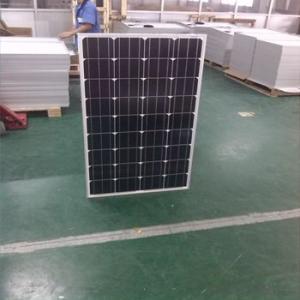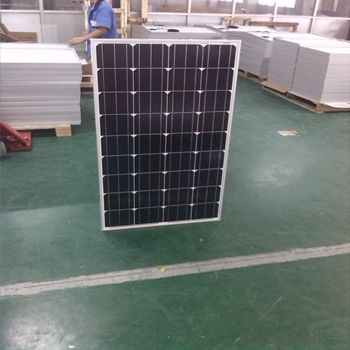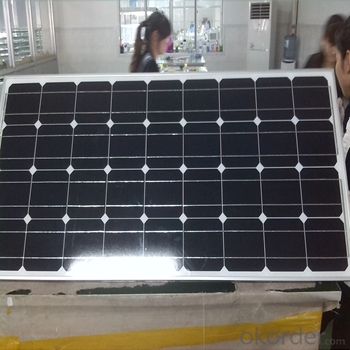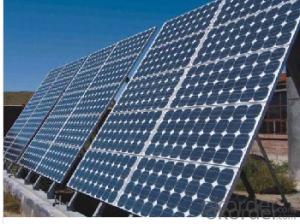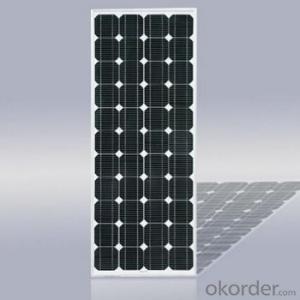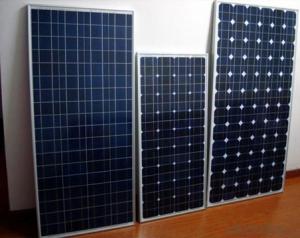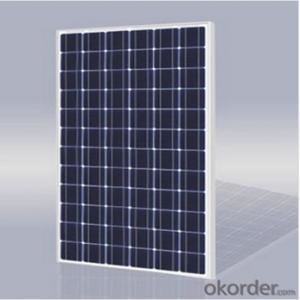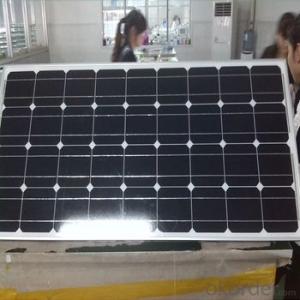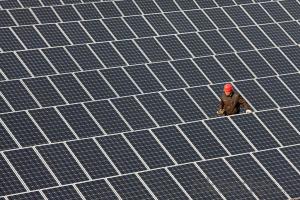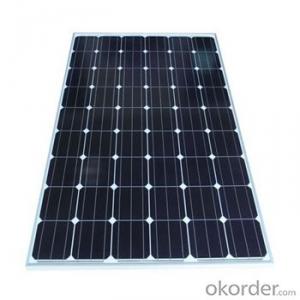Jea Solar Panels - Monocystalline Solar Panels-130w CNBM Series
- Loading Port:
- Shanghai
- Payment Terms:
- TT or LC
- Min Order Qty:
- 25 pc
- Supply Capability:
- 20000 pc/month
OKorder Service Pledge
OKorder Financial Service
You Might Also Like
Monocrystalline Solar Panels-130w Series
High efficiency crystalline solar cell. Even if under the weak light, the solar module can produce maximum power output.
II Tempered glass (toughened glass): Anti-reflecting coating and high transmission rate glass increase the power output and mechanical strength of solar module.
III EVA and TPT: Using high quality EVA and TPT to prevent destroying and water.
IV AI frame: Without screw, rner connection. 6 holes on the frame can be installed easily.
V Junction box: Multi function junction box with water proof.
VI Long lifetime: ≥25 years; Less power decrease.
VII Good performance of preventing from atrocious weather such as wind and hails.
VIII Resisting moisture and etching effectively, not effected by geology.
IX The certificate issued by international authority: UL, TUV, IEC, CE.
Standard Test Conditions of Monocrystalline Silicon Solar Panel
The opto-electrical specifications shown below are stabilized values being measured at Standard Test Conditions, Irradiance: 1000W/m2, Spectrum: AM1.5 at 25°C, The info below is subject to manufacturing tolerances.
Where appropriate minutes of measurement are available and are used for the dimensioning of the installation.
Advantages of Monocrystalline Silicon Solar Panel
• CNBM Solar performance guarantees for 25 years
• 12 years guarantee for workmanship
• Timeliness of delivery
• Quality Products certified (TÜV, UL, CE, ISO)
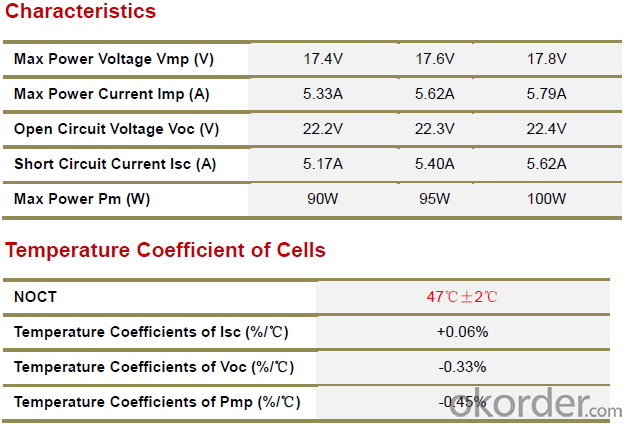
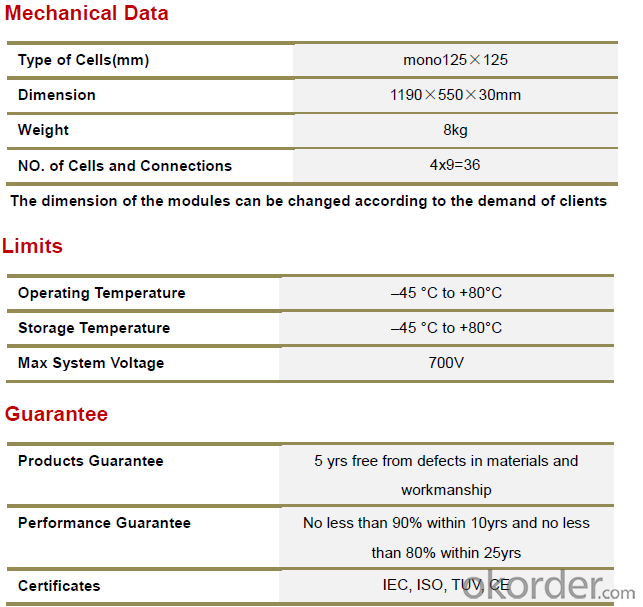
Certification
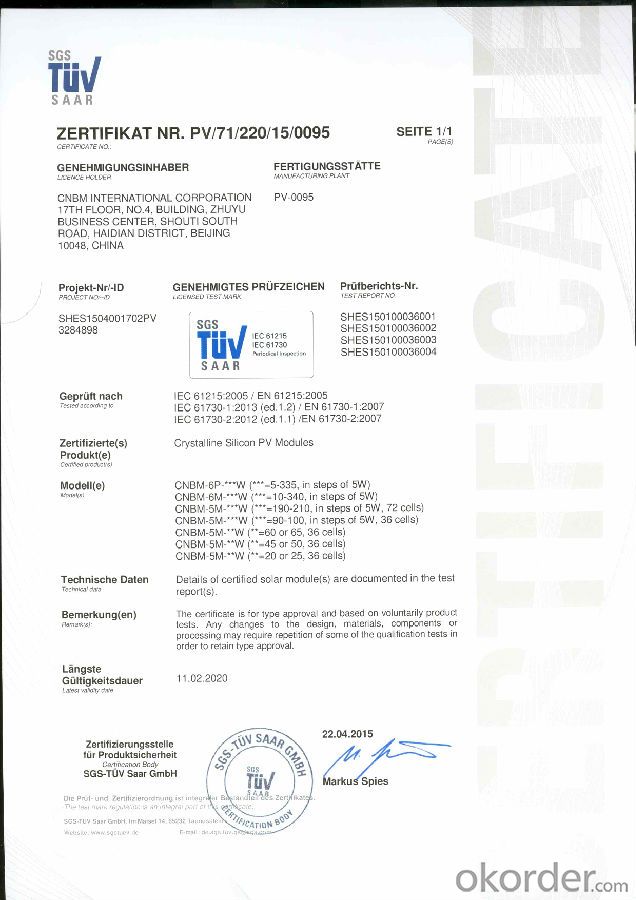
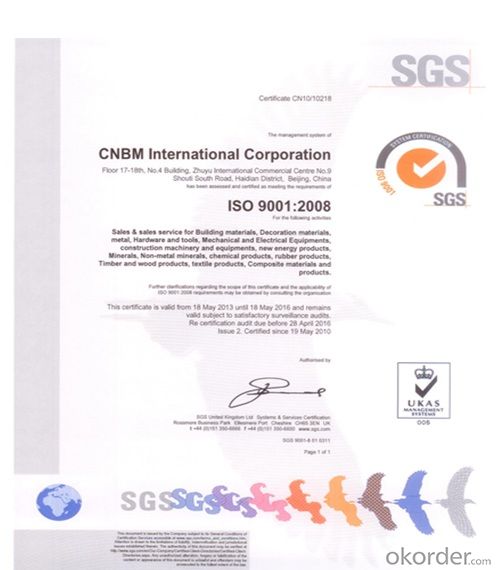

FAQ
We have organized several common questions for our clients,may help you sincerely:
①What price for each watt?
It depends on the quantity, delivery date and payment terms,
②What is your size for each module? Can you tell me the Parameter of your module?
We have different series of panels in different output, both c-Si and a-Si. Please take the specification sheet for your reference.
③Can you provide the peripheral products of the solar panels, such as the battery, controller, and inverter? If so, can you tell me how do they match each other?
Yes, we can, we have two companies for solar region, one is CNBM International, the other is CNBM engineering Co.
We can provide you not only the solar module but also the off grid solar system, we can also provide you service with on grid plant.
④What is your warranty system?
Our product performance guarantees for 25 years
• 12 years guarantee for workmanship
• Timeliness of delivery
• Quality Products certified (TÜV, UL, CE, ISO)
- Q: Does the new horizons has a solar panel for it power resources instead using nuclear generator?
- No solar panel, and for the reason you stated - it is so far from the Sun that a solar panel would be of little use (and a lot of extra weight) at the distances where the primary part of the mission was being performed. The power source is called an RTG. We can think of it as similar to a nuclear-powered battery or a miniature nuclear power plant. As far as I know it is not intended to reach any other star. If it does, it's power will have long since depleted - and it would take thousands of years at its current speed to reach even the closest star. Closest star: Proxima Centauri, slightly more than 4 light years away. Current speed of New Horizons relative to the Sun: 4.52 km/s That's 0.000048 of the speed of light. It would take more than 20,000 years to reach Proxima Centauri *if* it were heading in that direction (which it is not).
- Q: Can solar panels be used to power a public transportation system?
- Yes, solar panels can be used to power a public transportation system. By installing solar panels on the rooftops of public transportation vehicles or on charging stations at transit hubs, the energy generated from the sun can be harnessed to provide power for electric buses, trams, or trains. This reduces reliance on traditional energy sources and helps to make public transportation more sustainable and environmentally friendly.
- Q: Can solar panels be used in hot climates?
- Yes, solar panels can be used in hot climates. In fact, solar panels are more efficient in hot climates as they thrive in high temperatures. However, it's important to ensure proper installation and maintenance to prevent overheating and maximize their performance.
- Q: Can solar panels be used in areas with high pollution or smog?
- Yes, solar panels can still be used in areas with high pollution or smog. While pollution and smog can slightly reduce the efficiency of solar panels by blocking some sunlight, they can still generate electricity even in these conditions. However, regular maintenance and cleaning may be required to ensure optimal performance in polluted areas.
- Q: All I want to power is a small ice-maker (250 watts) for 25 minutes per day. That's all!!!Can I do that by using a 00 watt panel with 2-3 deep cycle batteries and getting 0 hours of quality light per day.(BTW) what size converter would you recommend? I want more than I need to grow the system
- If okorder and they ship across the US and Canada.
- Q: Can solar panels work in the shade?
- They will work somewhat in the shade but they really work best in direct sunlight. I have solar panels on my home and just a cloud passing over will cause the output to drop quite a bit.
- Q: i need to cut down on electricity bills, and so i was wondering if someone could give me step-by-step instructions, or websites that have step-by-step instructions on how to build an electricity generating solar panel.
- Build from scratch, sorry your way over your head. (mine too). There are lots of companies that will give quotes on doing what your looking for, but plan on spending 20 to 50K depending on where you live and what you need. I don't know about where you are, but My hydro bill is almost half delivery charges. Therefore I could cut back by 99% on the usage, and still only have my bill come down by less than 50%. I understand you desire to lower costs, but unless you do a big change(lots of outlay) your savings will be small. By all means shut off lights your not useing etc. there are other ways of lowering your household bills better way is solar heating. But this also depends on where you live. I'm building a solar collector for 2 houses , Contact me at and I'll pass on more info
- Q: I own a townhome in the Phoenix area (my power company's SRP, if that makes a difference). Phoenix is a great place for solar. I could probably save money, in the long term, if I got some solar panels.But I am currently extremely broke, so I can't buy solar panels unless I will more or less immediately be paying no more than I am now per month, with little or nothing down. And most of the solar leasing places won't work with me, because (as is common for townhomes) I don't technically own my roof. I have permission to put things on it, but the property management people (or whoever actually owns my roof) won't sign the lease or whatever.Anyone know of either a way to buy solar panels without paying significantly more per month than I already do for electricity, or a solar leasing company that can work with the restrictions I have?
- Nope; I see no escape. Best advice I can give is this: sell out and move to a single home residence that has no HOA. If you want solar, I believe the main roofline should run east-west, so that the south exposure of the roof can be easily and economically populated with panels. APS is better than SRP wrt solar ....maybe. Im not sure, everythiong around here is APS so there's no balance. Ive occasionally heard rumors from SRP folks who are unhappy.... check into it before you buy.
- Q: Is there a small solar panel system that I can put in my bedroom window and charge my phone and run an alarm clock off of? Or one I can run a microwave off of?
- You can cosider this product Flexible Personal Solar Panel. I think it will be helpful. Product Review Take the lightweight, easy-to-pack Brunton Solaris 6 / 2 Solar Panels on your next expedition to the Himalayas or down that nearby trail or dirt road. Brunton used CIGS, the most efficient thin-film solar technology available, to create the Solaris. Choose either the Solaris six-watt or 2-watt panel—both of them fold up to the size of a CD wallet and work, even in overcast conditions, to charge your cell phone, digital camera, camcorder, iPod, and other small electronics. A built-in reversing diode prevents the solar panel from discharging your batteries when the sun disappears for the night. Brunton's Solaris 2-watt panel can even charge your satellite phone or trickle charge your laptop.
- Q: Well, I am looking for a cheap way on building a solar panel, instead of buying by the manufacturing stores. I would like to stay in the budget up to ,000 dollars. I want to have Solar Energy for my house because the sun is always shining. Is there a way I can make the Light power some of my house? What would I need? How much time would it take?Where can I get the items I need?
- The panels themselves- no. Minimal. For most it is just hosing them off with water as needed to remove dust. Battereis on the other hand are usually needing attention every week to maintain the electrolyte levels. The exception being AGM types. Periodic desulphating may be needed on older setups, but beyond that keeping chickens are more demanding. Batteries are how you store your energy for periods when demand exceeds what the panels can deliver, and at night. How many varies. Factors of how you use energy has most impact. Some people can get by with a few hundred Watts, for others 3 to 5 Kilowatts are needed. For the average American, 5 to 7 Kilowatts as a minimum without some serious changes to how energy is used.
Send your message to us
Jea Solar Panels - Monocystalline Solar Panels-130w CNBM Series
- Loading Port:
- Shanghai
- Payment Terms:
- TT or LC
- Min Order Qty:
- 25 pc
- Supply Capability:
- 20000 pc/month
OKorder Service Pledge
OKorder Financial Service
Similar products
Hot products
Hot Searches
Related keywords
